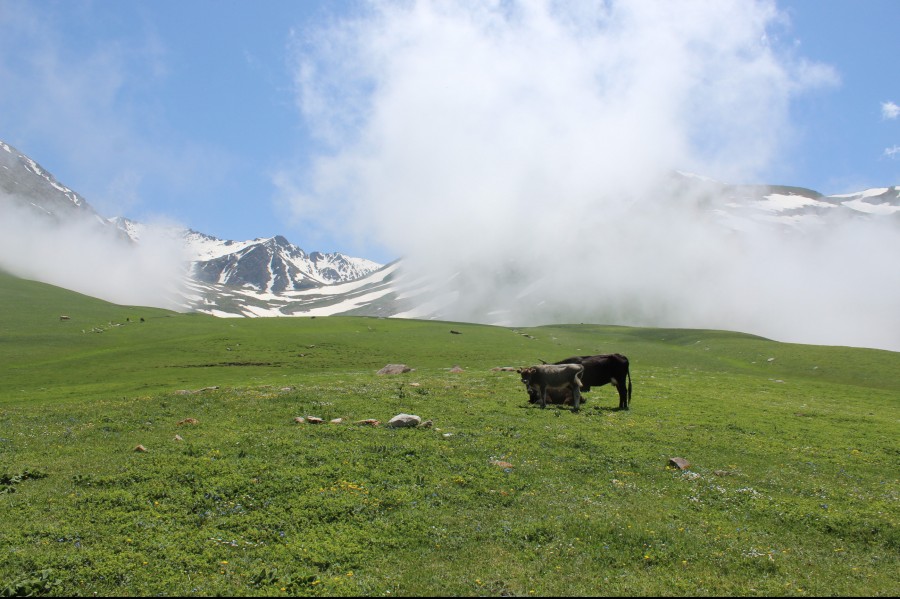
To achieve this, sustainable forest and land management approaches have been implemented in the Alatai and Kan-Achu nature parks, aimed at reducing degradation, erosion, and restoring pastures. The process of developing resource management plans, defining buffer and "quiet" zones, and implementing special land use regimes has strengthened the capacity of the staff of the Alatai and Kan-Achu nature reserves.
Buffer zones and migration corridors totalling 50,000 ha have been created and integrated into the territorial planning (with a total indirect coverage of 944,317 ha) for the Alatai and Kan-Achuu SNPs. Economic and business activities will be developed in this area, including managed hunting grounds, regulated grazing and ecotourism. Buffer zone use regimes have also been agreed with users from rural areas bordering the nature parks.
The sustainable land management approach has been applied to more than 147,000 ha of pastures, which are used by residents of four Aiyl Aimaks located near the protected areas. One of the results of the approach will be the restoration of over 65, 000 ha of degraded land in the Toktogul and Toguz-Toro rayons of Jalal-Abad Oblast.
New management plans have been developed for the Alatai and Kan-Achuu SNPs, including research and biodiversity monitoring plans and information dissemination plans.
Joint patrolling systems were strengthened with the help of Local Councils on Protected Areas Management, for example, anti-poaching teams were formed, and law enforcement and oversight in the Alatai and Can-Achuu SNPs was ensured.
An assessment of the management effectiveness of the Alatai and Kan-Achuu SNPs was conducted using the Management Effectiveness Tracking Tool (METT) and with the participation of all stakeholders.